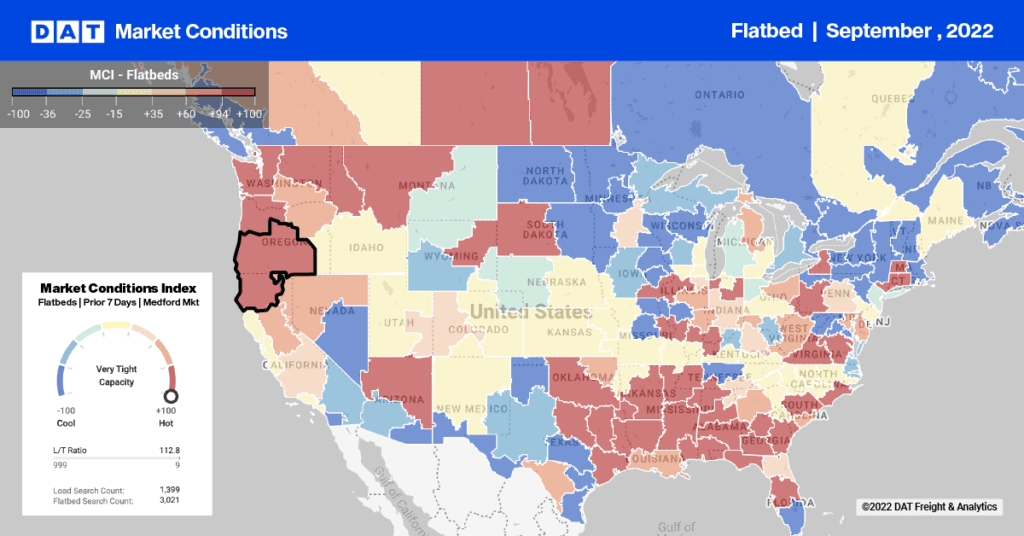Contract rates are beginning to rise, in response to capacity constraints, according to new data in DAT RateView. Van rates rose for the first time in 2013, with a one cent increase, while reefer rates rose two cents and flatbed rates added three cents. Contract rates do not include the fuel surcharge, which is calculated separately.
Contract Rates Remained Stable Through May 2013– Shippers held the line on prices through the month of May, but the June rate increase indicates a change in that trend. Even higher rates may be ahead, as capacity will continue to be squeezed due in part to tougher trucking regulations that are expected to chip away at driver productivity.
Increase in Load-to-Truck Ratio Indicates Tightening Capacity in Q2– Ongoing pressure has been evident for several months, as freight availability and load-to-truck ratios increased steadily on DAT Load Boards. This advance indicator of tightening equipment capacity led to corresponding increases in spot market rates, beginning in March and continuing through April and May.
Contract Rates Respond in June, to Ongoing Capacity Pressure – Finally in June, even the sluggish economy and relatively tepid demand could not protect shippers’ contract rates from the pressure caused by capacity constraints. After months of stability, contract rates finally began to shift. Economic expectations appear to be improving for the second half of 2013, as well, adding to price pressures from the demand side.
Spot Market Rates Also Rose in June, as Expected – While load availability and load-to-truck ratios appeared to peak in late May on the spot market, broker “buy” rates did not stop rising, but moved higher in June. This is typical for the season, and in the final week of June, spot market rates approached the record highs of 2012.
July Surprise: Spot Market Rates Rise – Early July provided another surprise, however, as rates defied the usual seasonal slump and instead surged even higher. As of today, July 23, spot market van rates remain at or near their all-time high, reefer rates are only slightly off their June peak, and flatbed rates continue to rise, although the mix is less favorable than it was a year ago in that segment.
Flatbed Freight Abounds, but Not for Highest-Paying Hauls – Flatbed loads remain plentiful but the freight is dominated by commodities such as lumber and produce, especially onions and potatoes, which don’t pay as well as steel and machinery, and also tend to move longer distances at lower rates per mile.
Harvest Volume Props Up Reefer Rates – Reefer produce has been slightly down in volumes for 2013 despite overall better weather than in 2012. Florida had an abundant vegetable crop, which compensated partly for a decline in citrus. Current harvest volume is high enough to maintain reefer rates at or near the June levels.
Van Rates Soften, Except in “Hot Spots” – Van freight may be softening in many places around the U.S., but rates are being sustained in “hot spots” — regional areas with abundant freight. Pressure on van rates is atypically high for July in much of the Mississippi valley below Quincy, IL and Eastern seaboard areas including the port cities of Baltimore, Norfolk and North Charleston, SC.
Get an overview of truckload rate and capacity trends on DAT Trendlines. For current and historical rate trends on each point-to-point lane, fill out and submit the online form or call 800-551-8847 to learn more about DAT RateView.
What are you seeing in your lanes?



